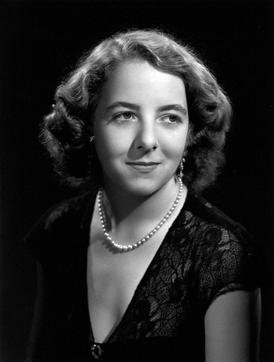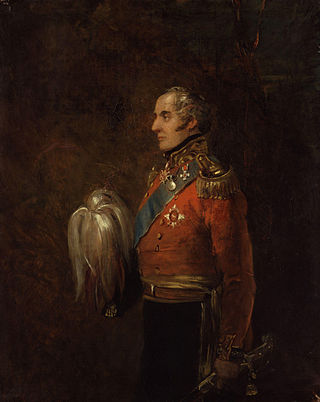
Alexander Arthur Alfonso David Maule Ramsay of Mar DL was the only child of Princess Patricia of Connaught, who renounced her royal title and style when she married then-Captain the Hon. Alexander Ramsay in February 1919. His mother was the youngest child of Prince Arthur, Duke of Connaught, the third son of Queen Victoria and Prince Albert. His father was the third son of John Ramsay, 13th Earl of Dalhousie. Through the marriage of his maternal aunt, Princess Margaret of Connaught, to the Swedish prince who later became King Gustav VI Adolf of Sweden, his first cousins included Prince Gustaf Adolf, Duke of Västerbotten, whose son later became King Carl XVI Gustaf of Sweden; and Princess Ingrid of Sweden, who later became Queen of Denmark after marrying the Danish prince who later became King Frederik IX of Denmark.

A Lord of Parliament was the holder of the lowest form of peerage, entitled as of right to take part in sessions of the pre-Union Parliament of Scotland. Since that Union in 1707, it has been the lowest rank of the Peerage of Scotland, ranking below a viscount. A Lord of Parliament is said to hold a Lordship of Parliament.

Earl of Rothes is a title in the Peerage of Scotland. It was created in 1458 for George Leslie, 1st Lord Leslie. He had already been created Lord Leslie in 1445, also in the Peerage of Scotland. His grandson, the third Earl, having only succeeded his elder brother in March 1513, was killed at the Battle of Flodden on 9 September of the same year. His son, the fourth Earl, served as an Extraordinary Lord of Session. Lord Rothes was also tried for the murder of Cardinal Beaton but was acquitted.

Earl of Dalhousie, in the County of Midlothian, is a title in the Peerage of Scotland, held by the Chief of Clan Ramsay.

Earl of Northesk is a title in the Peerage of Scotland. It was created in 1662 for John Carnegie, who notably served as Sheriff of Forfarshire. He was given the subsidiary title of Lord Rosehill and Eglismauldie at the same time. Carnegie had already been created Earl of Ethie and Lord Lour in 1647 but relinquished those titles in exchange for the 1662 creations. For the purposes of precedence and seniority, the earldom of Northesk is treated as having been created in 1647, the date of the creation of the earldom of Ethie.

Lord Balfour of Burleigh, in the County of Kinross, is a title in the Peerage of Scotland. It was created in 1607 for Sir Michael Balfour.

Lord Saltoun, of Abernethy, is a title in the Peerage of Scotland. It was created in 1445 for Sir Lawrence Abernethy. The title remained in the Abernethy family until the death in 1669 of his descendant the tenth Lady Saltoun. She was succeeded by her cousin Alexander Fraser, the eleventh Lord. He was the son of Alexander Fraser and Margaret Abernethy, daughter of the seventh Lord Saltoun. The title has remained in the Frasers of Philorth family ever since.

Lord Borthwick is a title in the Peerage of Scotland.

Lord Lovat is a title of the rank Lord of Parliament in the Peerage of Scotland. It was created in 1458 for Hugh Fraser by summoning him to the Scottish Parliament as Lord Fraser of Lovat, although the holder is referred to simply as Lord Lovat.

Lord Napier, of Merchistoun, is a title in the Peerage of Scotland. It was created in 1627 for Sir Archibald Napier, 1st Baronet. Earlier that year, he already held the Napier Baronetcy, of Merchistoun in the County of Midlothian, created in the Baronetage of Nova Scotia. The titles remained united until 1683, when the Baronetcy became dormant. It was revived in the early 19th century and is now held by another branch of the Napier family. Between 1683 and 1686, the Lords of Napier also held the Nicolson Baronetcy, of Carnock in the County of Stirling, and since 1725 the Scott Baronetcy, of Thirlestane in the County of Selkirk, both baronetcies created in the Baronetage of Nova Scotia. The latter one is held till today. Additionally, the tenth Lord was created Baron Ettrick, of Ettrick in the County of Selkirk in the Peerage of the United Kingdom on 16 July 1872.

Baron Strathclyde is a title that has been created twice in British history, both times in the Peerage of the United Kingdom. It was first created on 15 January 1914 when the politician and judge Alexander Ure was made Baron Strathclyde, of Sandyford in Lanarkshire. This creation became extinct on his death in 1928.
The hereditary peers form part of the peerage in the United Kingdom. As of August 2023, there are 805 hereditary peers: 30 dukes, 34 marquesses, 189 earls, 110 viscounts, and 442 barons.
Margaret Alison of Mar, 31st Countess of Mar, is a Scottish hereditary peer and politician. She was a crossbench member of the House of Lords from 1975 to 2020 and was one of 92 hereditary peers elected to remain in the Lords in 1999. She is the holder of the original earldom of Mar, the oldest peerage title in the United Kingdom. She is the only suo jure countess and was the only female hereditary peer in the House of Lords from 2014 to 2020. She is also a farmer and former specialist goats cheesemaker in Great Witley, Worcestershire.
The heir apparent or heir presumptive to a Scottish peerage is known as a Master, or a Mistress if the heir is female. The heir's style is "The Master of [Peerage]" or "The Mistress of [Peerage]".
Katharine Fraser, Mistress of Saltoun, DL is the daughter of Captain Alexander Ramsay of Mar and Flora Fraser, 21st Lady Saltoun.
Alexander Arthur Fraser, 20th Lord Saltoun, styled Master of Saltoun until 1933, was a Scottish peer who was one of the longest-serving representative peers, serving from 1935 to 1963.
The Hereditary Peerage Association is a British representative body for hereditary peers in the United Kingdom formed in 2002 in the wake of the House of Lords Act 1999.
Alexander Fraser, 11th Lord Saltoun, was a Scottish peer and the 10th Laird of Philorth.

Diana Denyse Hay, 23rd Countess of Erroll was a British noblewoman.

Lieutenant-General Alexander George Fraser, 17th Lord SaltounKStG KMT, was a Scottish representative peer and a British Army general who fought in the Napoleonic Wars and the First Opium War.









